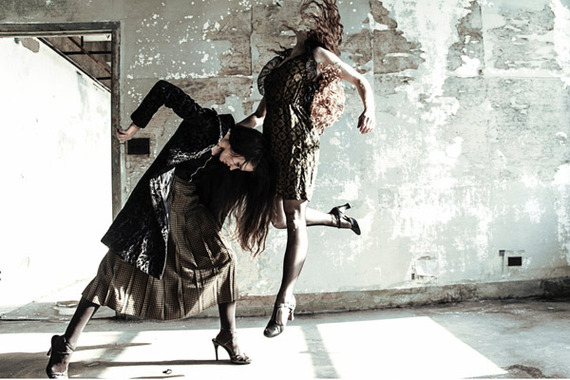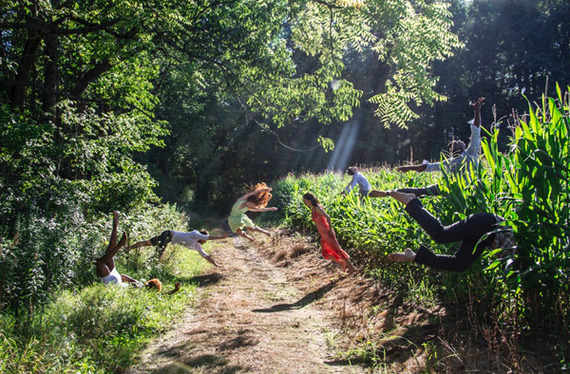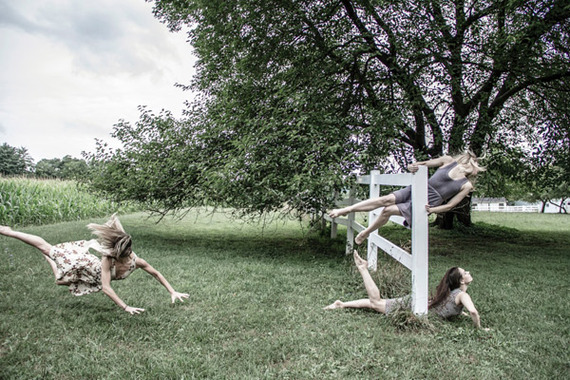Every so often on my blog, I like to feature talks with creative professionals whose work I admire. Recently, I spoke with photographer Travis Magee, whose portfolio includes everything from event photography and interiors, to portraiture and breathtaking art pieces.
Originally trained as a professional dancer, Travis brings his experience and understanding of movement to all of his work, and the results, as I think you'll see, range from lively, to compelling, to mesmerizing.
Travis talks about how he came to photography, the influence of dance on his work, and how he creates his positively kinetic images.
Matthew David: How did you get your start in photography?
Travis McGee: I trained and worked as professional dancer for most of my life. When I was 14 I got serious and moved to New York to be in performing art school and study dance full time.
I picked up a camera and started to do photography mostly as a hobby around the same time. Eventually, I was discovered by a few dance companies that asked me to start doing dance photography for them.
Then I went to school in Boston to train as a dancer, and I continued to do mostly dance photography but started to get into portraiture as well.
After graduation I was a full time dancer for six years, and several years ago I transitioned out of being dancer and started doing photography as a full time profession.
MD: How does your background as a dancer influence your photography?
TM: My work really stems from starting in dance photography. I was going to live performances and shooting, which I think is when I picked up my eye for catching movement.
Most of the time, when you're shooting a live performance you haven't had a chance to see it prior, so you're watching the dancers move and you have to be able to anticipate where the photograph is going to be. You have to see it coming and catch it. So I got very good at doing that.
I would also do a lot of studio work with dancers, posing them and working with them to come up with an idea, come up with a movement or a story, and then use movement to tell that story.
As the process has gone on, I've moved away from doing strictly dance photography into fashion and commercial and event shooting.
If I'm shooting a live event, I can see where the peak of a moment is going to be, where people are moving towards, when everything comes together for a great photograph.
MD: Are you self-taught?
TM: I am. I took one class for three months from the International Center for Photography when I was in high school. Beyond that, it's been reading some books and doing a lot of photography. I also have friends who are photographers; we exchange ideas and techniques.
MD: How do you go about creating your artistic work? Where do you find the dancers you work with?
TM: It's an organic process. I have about eight dancers that I work with on a regular basis. They've almost become a core company for me. We do a lot of traveling together and they also do some performances.
Those dancers come from many different places. Some of them I know from when I was still dancing. But more and more, many of them are people who have seen my work and want to work with me.
Beyond that, I shoot some of the best dancers in New York who are interested in doing something that's different, a little more edgy, a little more storytelling than a traditional dance shot.
MD: What inspires you? How would you describe your creative process?
TM: A lot of my work comes from an idea, and really from the story. So if I'm working with dancers or a client, if I'm doing a fashion shoot, the question for me is always, "What is the story that we're trying to tell?"
The thing that interests me most -- and I think this is where I start to stand out as a photographer -- is that I then ask, "What movement can we use that will instantly show who these people are to each other?"
That's the fun part for me. That's when the collaborative process begins with my models or whom I'm working with.
It could be a big movement, or, if I'm working with someone who's not a dancer, maybe it's just some small look or touch that will translate so much through the photo.
MD: How many shots do you have to take to get one of your artistic photos?
TM: It kind of depends on how many dancers are in the shot. If there's more than three probably about 10 to 15 before we finally get the one.
A lot of planning goes into it. It's figuring out what one person is doing, and then you figure out what the other people are doing and then you say, "OK, everybody 1, 2, 3, go."



